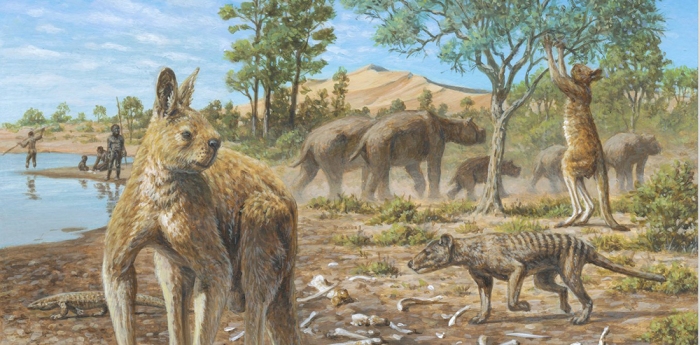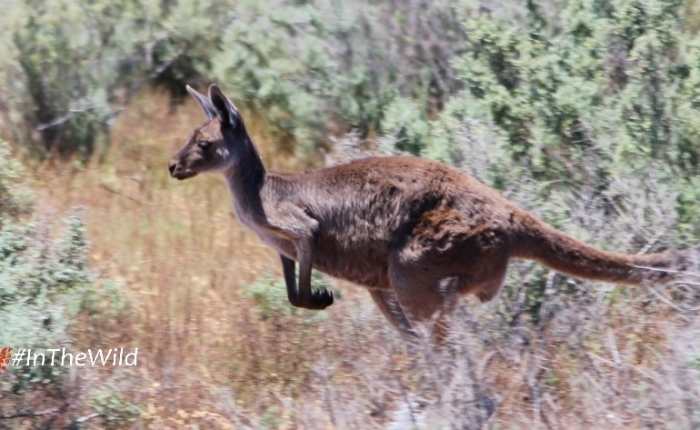The earliest kangaroo-like animals – Nambaroo gillespieae – were ranging around northwest Queensland 25 million years ago. Another couple of kangaroos Balbaroo fangaroo and Cookeroo hortusensis have been found as 15-23 million year old fossils at Riversleigh in Queensland.
Mungo, in south-western New South Wales, is also a rich source of fossils. The site is famous for human history, but it is also significant for megafauna fossils.
Procoptodon goliah, the largest kangaroo to have ever lived, has been found in Mungo sediments. This slow giant was 2.2m tall and weighed around 200 kg. It had huge long arms and large curved claws for grasping tree branches to get to the leaves it ate.

Some Aboriginal People in NSW have oral history of a huge kangaroo with long arms that was dangerous to people. It is possible that Procoptodon lived with Aboriginal People for as long as 30,000 years. Read more here

A large extinct wallaby, Protemnodon, has also been found at Mungo. Fossils of Sthenurus – a large browsing kangaroo – have also been found close by.

Two large extinct macropods (I can’t find their exact species yet) also lived at Mungo. They may have been Macropus pearsoni – who had a large range extending from Cape York and the Darling Downs in Qld to Lake Kanunka in the far north of SA ; and Macropus titan – who ranged from Wellington Caves, NSW, Naracoorte Caves, SA to near Melbourne VIC – who looked like a much larger Eastern Grey Kangaroo.
How did Procoptodon and Protemnodon die out? It is one of the great debates that has raged in Australia for decades. Mungo may have provided the answer.
Griffith University researchers searched for megafauna fossils in areas that also showed continuous occupation by Aboriginal People. Mungo was the perfect location, with a known timeline of Aboriginal occupation going back 50,000 years. They found megafauna surviving 33,000 years ago – at least 17,000 years after the arrival of Aboriginal People.
As this article in The Conversation shows, the theory that Aboriginal People wiped out the megafauna is not supported by science.
Learn more about Aboriginal History and megafauna at Mungo on our 4 day private Mungo Outback Journey
Read about our Aboriginal Guide’s in-depth knowledge of Mungo plants
LINKS:
https://australianmuseum.net.au/procoptodon-goliah
http://www.australiangeographic.com.au/blogs/austropalaeo/2015/12/fossil-factfile-procoptodon
